一 : 求罗浮宫的介绍(英文的)
求罗浮宫的介绍(英文的)
Louvre
Early in the 13th century had already been built into the evening,intermittent see has been built by several century.It is one of the minority one of several important museums.It has 300,000 collections,many of the world's sole.Such as "Mengnalisha smile," "Venus" sculptures,and so on.13th century,the Louvre is a prison,the Commissioner of the State of重刑犯,king of the way Francis I at the time,suddenly fell in love with this prison,because from here appreciate Seine scenery is the most beautiful and simple.So he changed the Housing for the palaces,several centuries after the king has focused on the right here.The Louvre's gorgeous style,which opened so that until the 17th century,when Louis XIV built the Potala Palace of Versailles Palace,the Louvre only at the Chamber Kang opponent.The building with the Louvre,the original somewhat like enormous ",",the 16th century burning of a large car to the north,has failed so far to rebuild,so now looks a bit like "Au" of the word.This concave word courtyard known as "Napoleon Courtyard",the hospital used in a fully transparent glass pyramid building up,it is Let the Chinese people - IM Pei architects得意之作.The Louvre of the tour route is 4.5 km long,open six days a week,not a day at the same project,in order to complete the whole Palace laid on the need for six days time,and good in the most part of the cream of daily included in the display,if not ample time,but also a no-regrets.Look at the flowers usually Zoumadai visit again,usually takes four hours.
二 : 重阳节 英文介绍
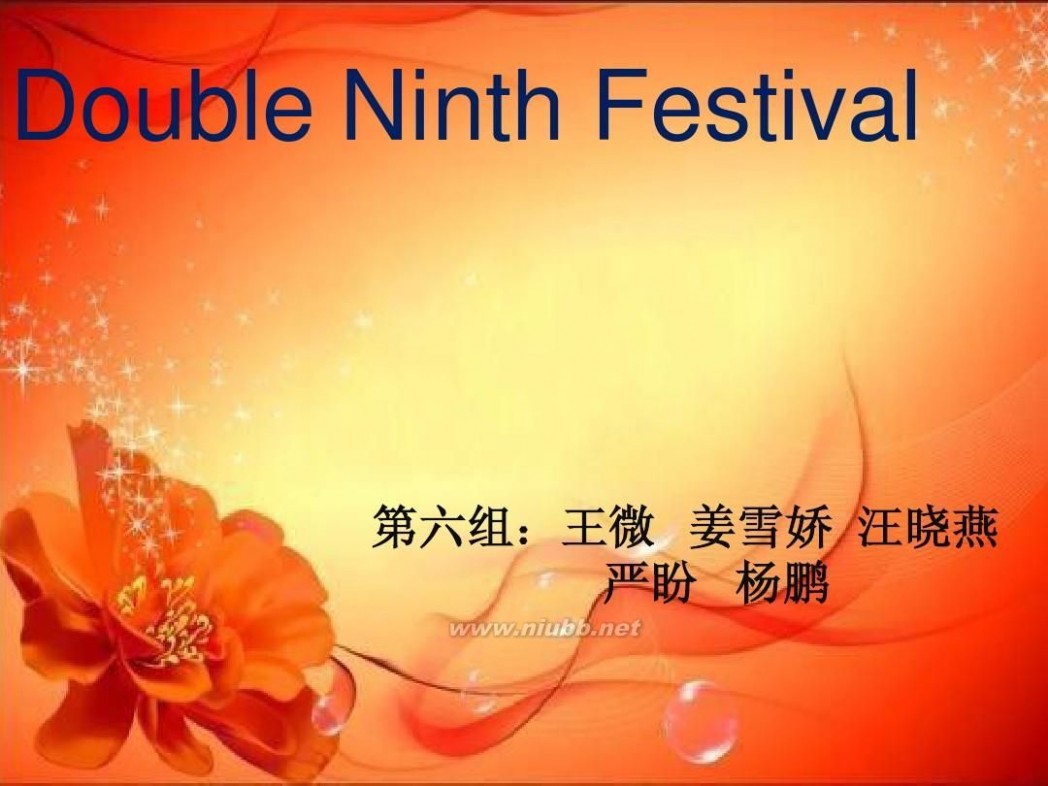
重阳节 英语 重阳节 英文介绍

重阳节 英语 重阳节 英文介绍
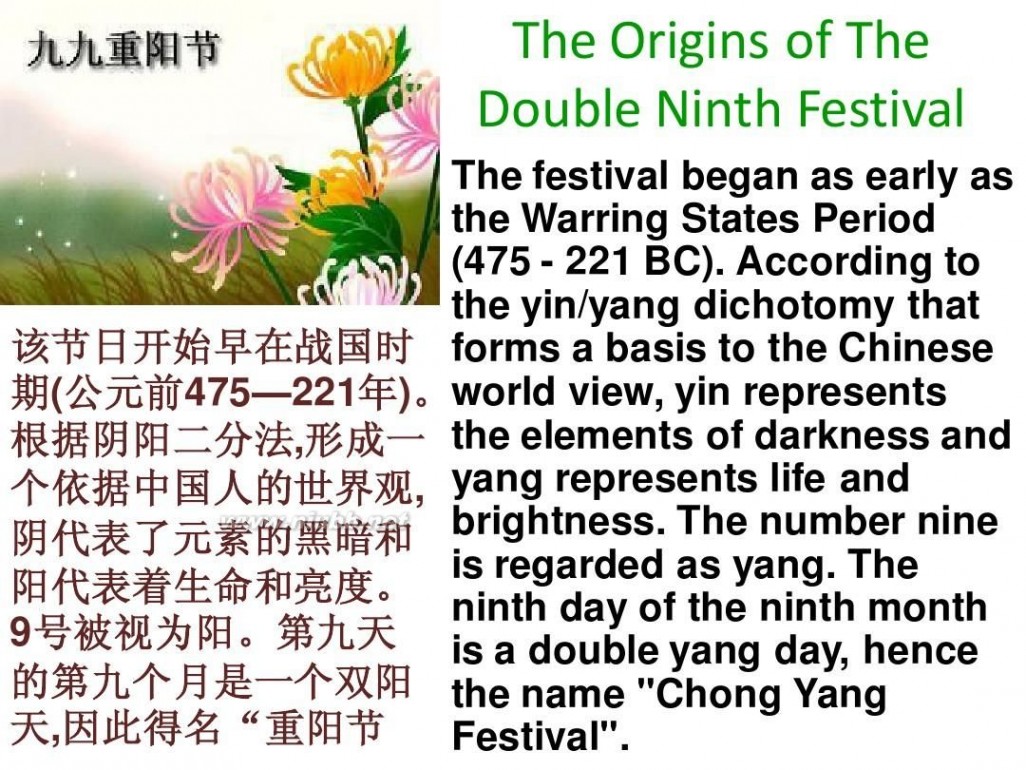
重阳节 英语 重阳节 英文介绍
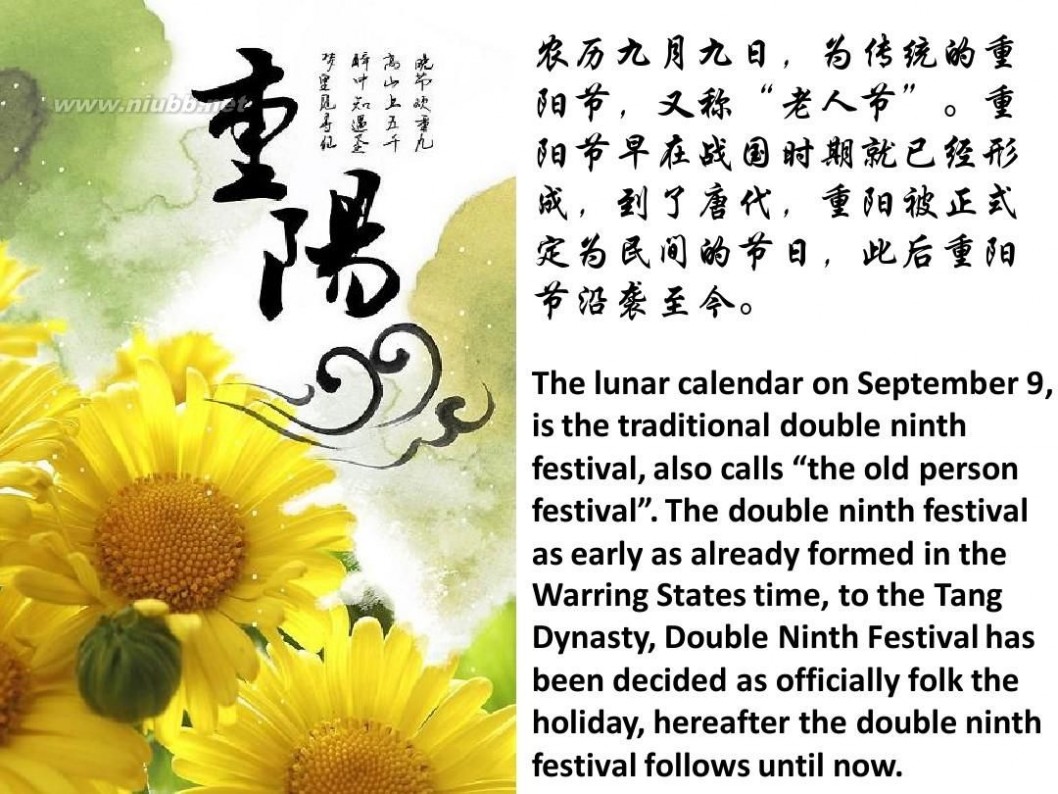
重阳节 英语 重阳节 英文介绍

重阳节 英语 重阳节 英文介绍
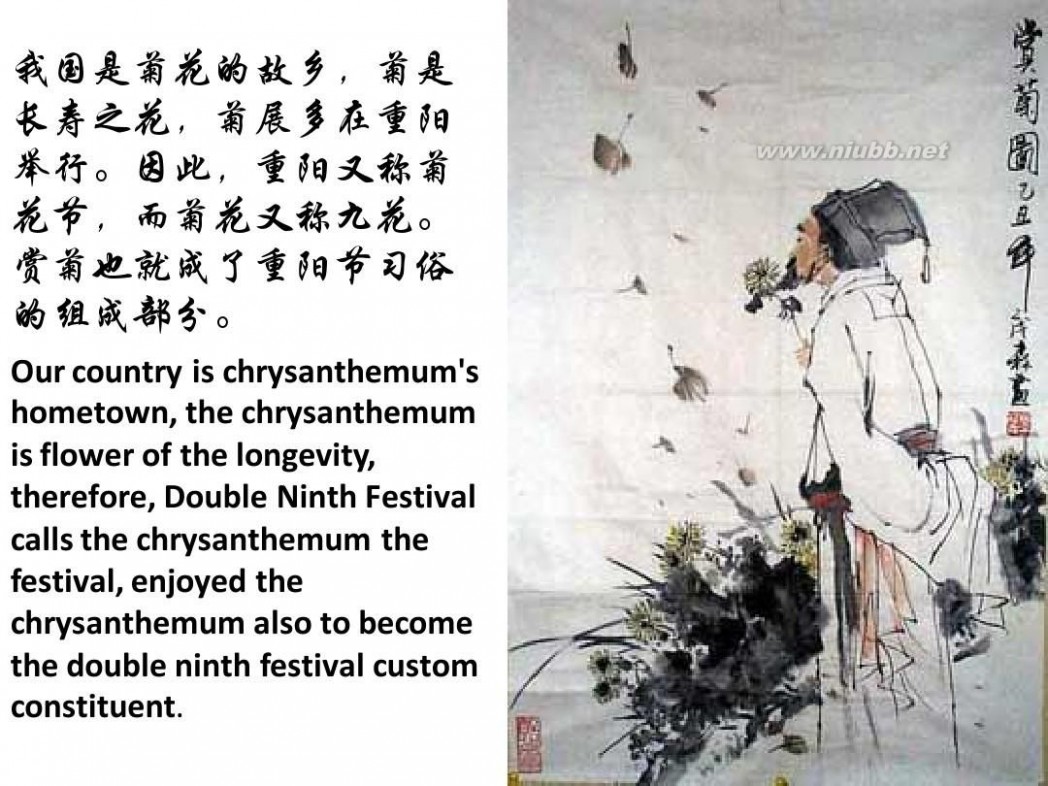
重阳节 英语 重阳节 英文介绍

重阳节 英语 重阳节 英文介绍

重阳节 英语 重阳节 英文介绍
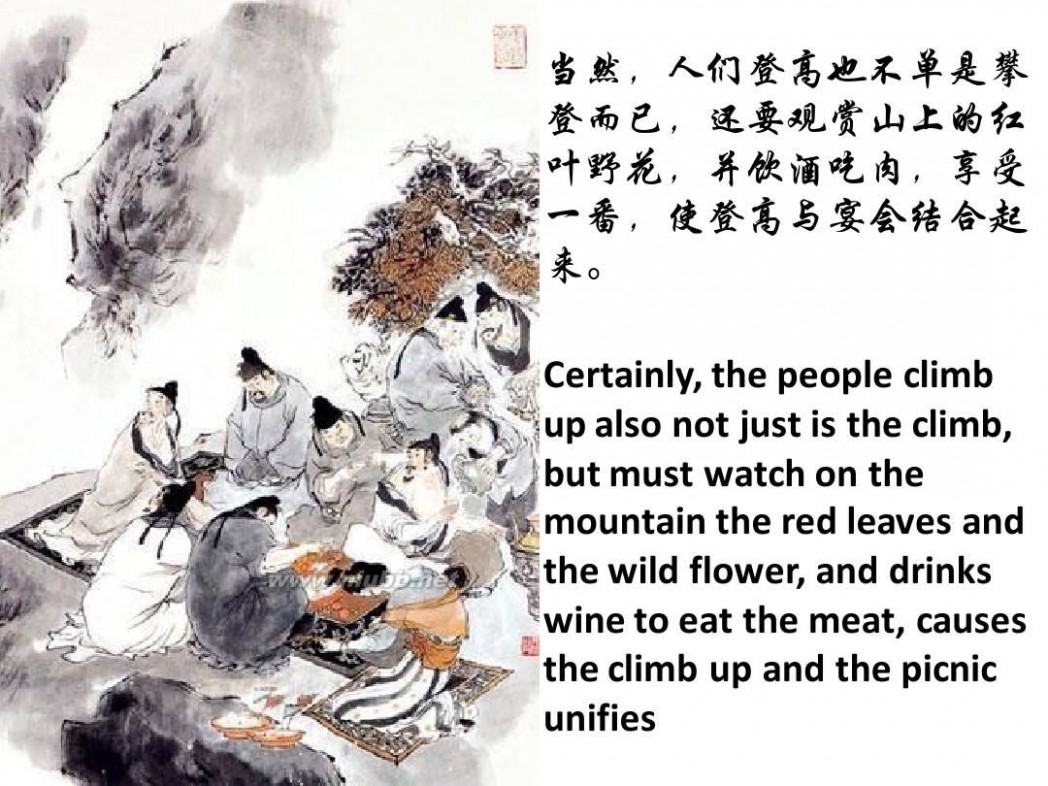
重阳节 英语 重阳节 英文介绍
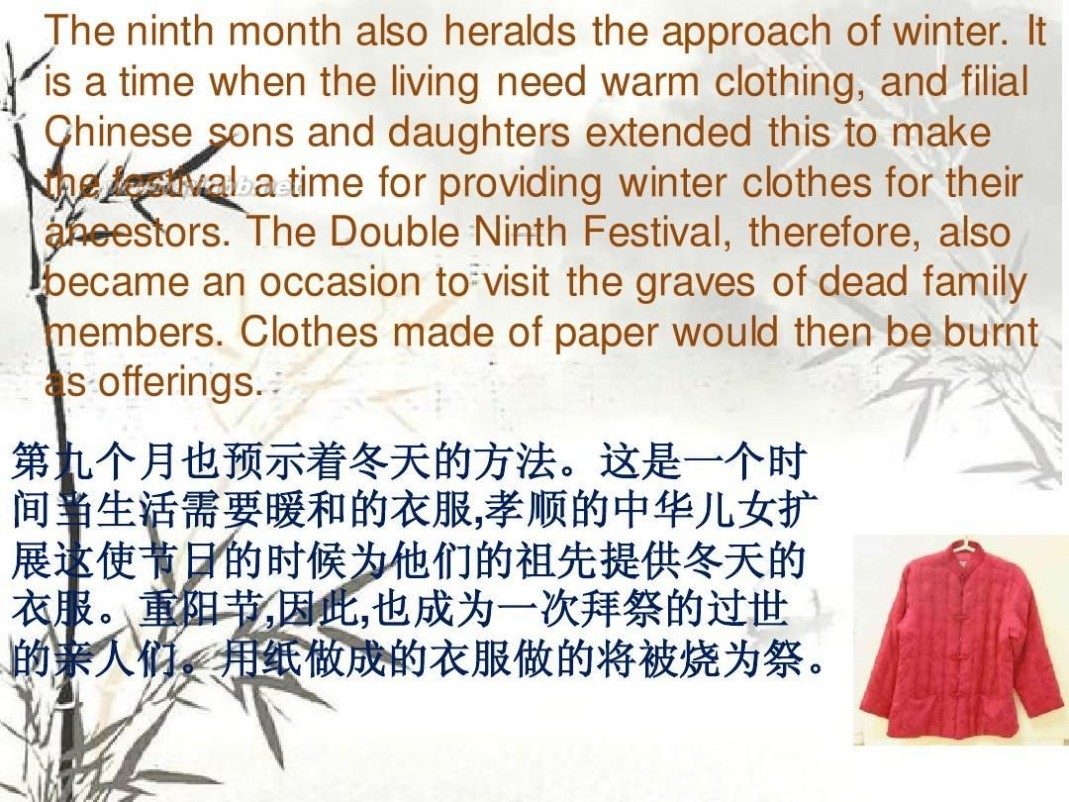
重阳节 英语 重阳节 英文介绍

重阳节 英语 重阳节 英文介绍

重阳节 英语 重阳节 英文介绍
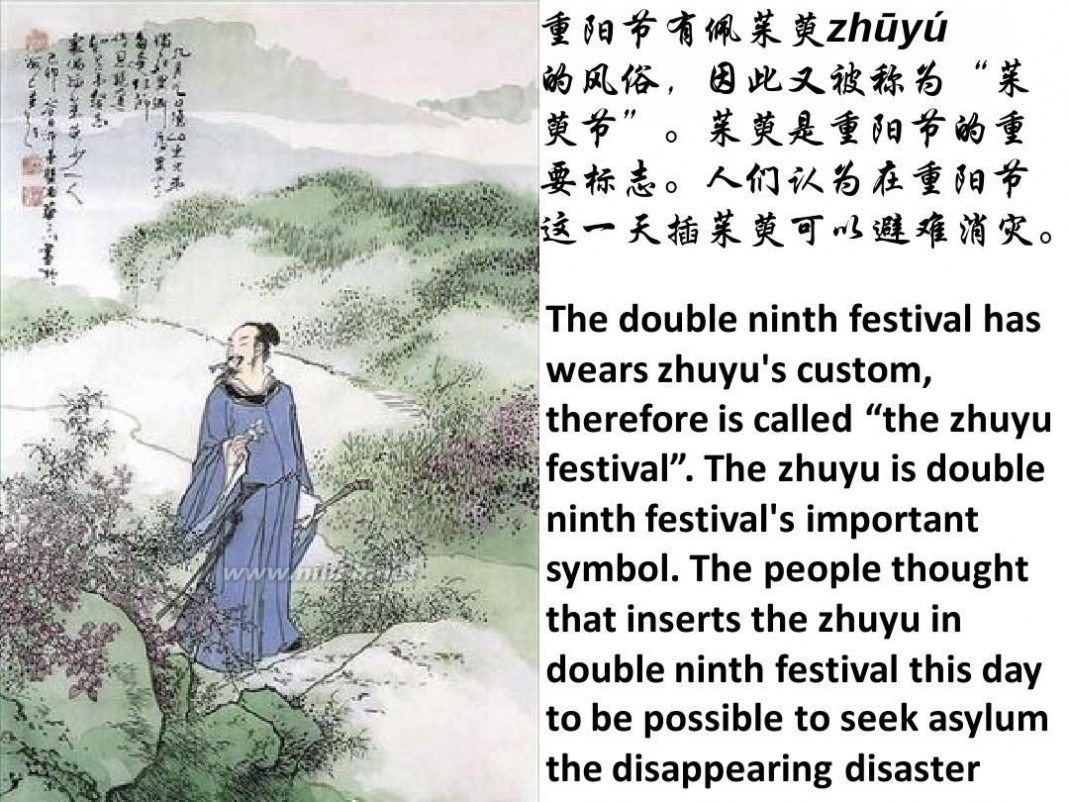
重阳节 英语 重阳节 英文介绍
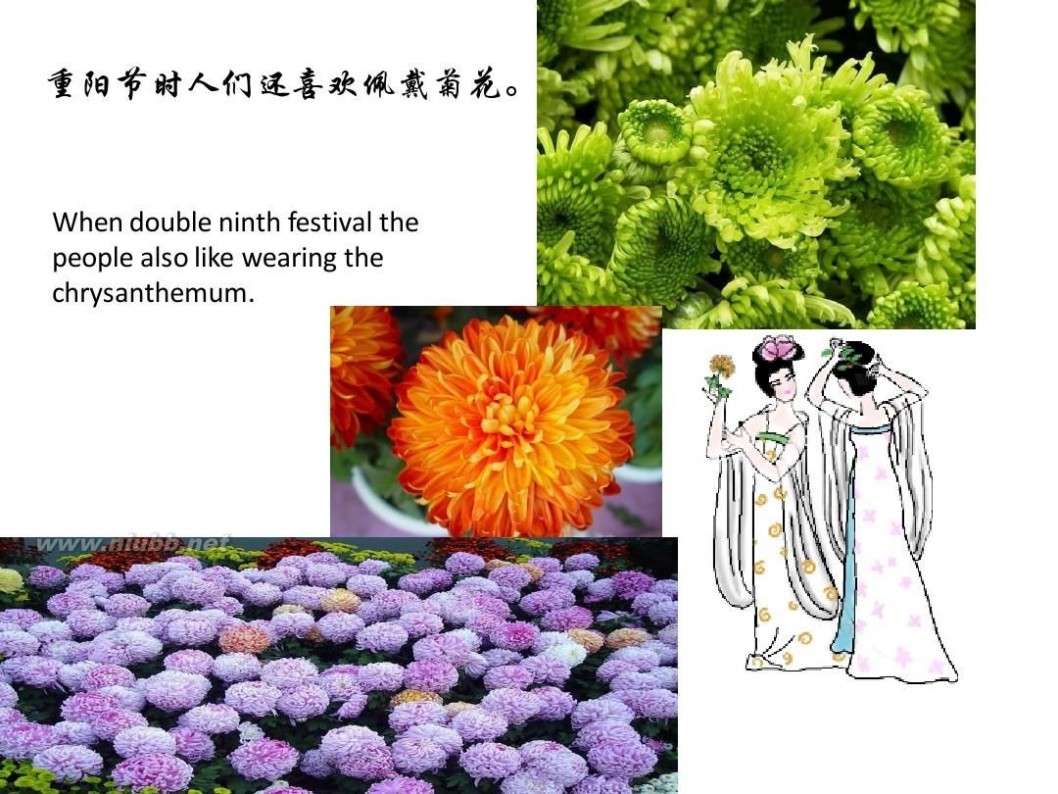
重阳节 英语 重阳节 英文介绍
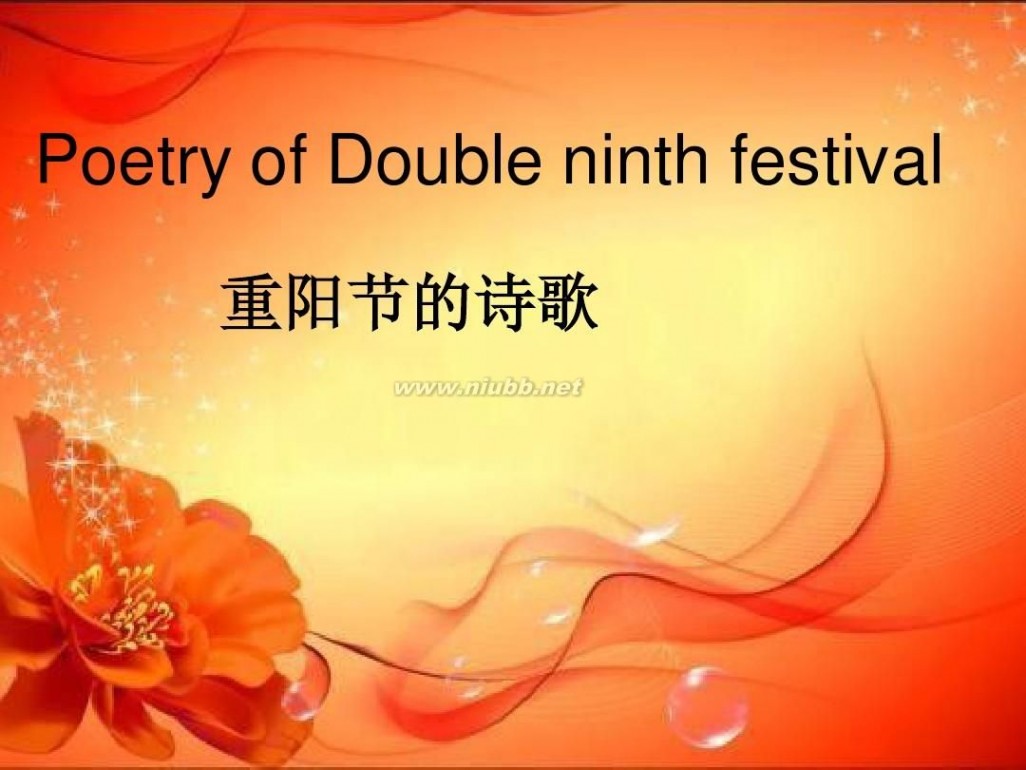
重阳节 英语 重阳节 英文介绍

重阳节 英语 重阳节 英文介绍
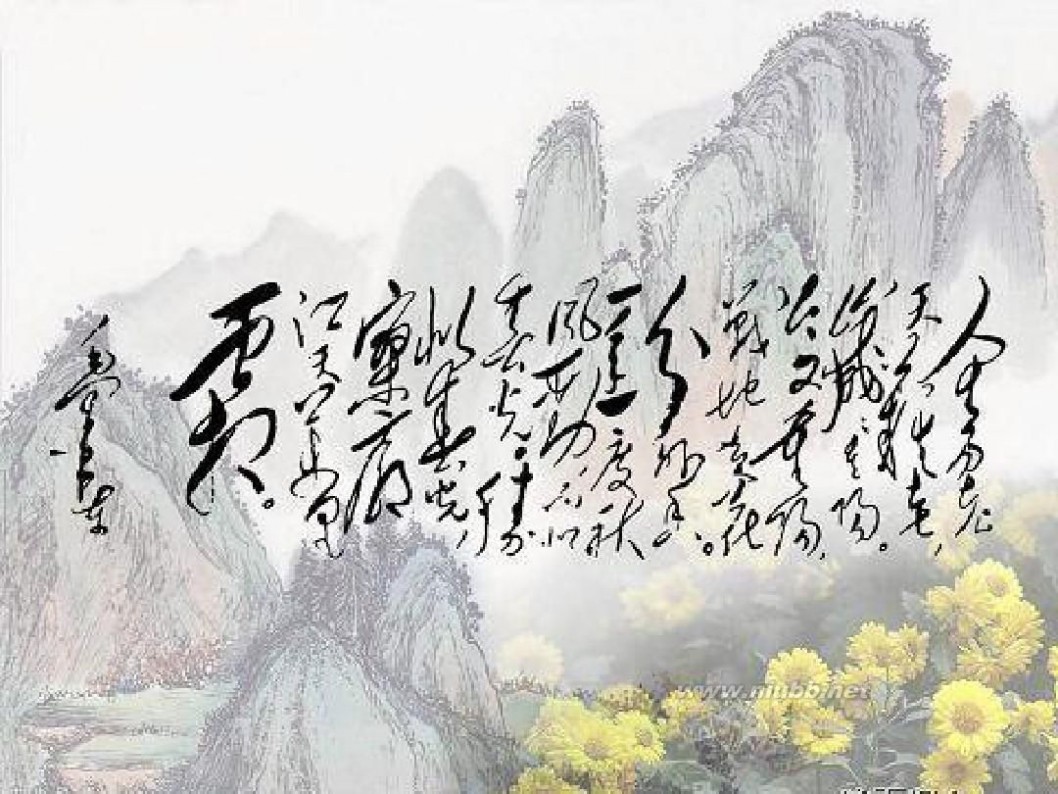
重阳节 英语 重阳节 英文介绍

重阳节 英语 重阳节 英文介绍

重阳节 英语 重阳节 英文介绍

三 : 沈阳的英文介绍 (Wikipedia)
Shenyang , is a sub-provincial city and capital of Liaoning province in Northeast China.
Along with its nearby cities, Shenyang is an important industrial center in China, and the transportation and commercial centre of China&39;s northeastern region.
The city was also known as Shengjing or Fengtian .
History
This section does not cite any references or sources.
Please help improve this section by adding citations to reliable sources. Unverifiable material may be challenged and removed.
Shenyang
Chinese name
Traditional Chinese: 瀋陽
Simplified Chinese: 沈阳
Transliterations
Mandarin
- Hanyu Pinyin: Shěnyáng
Manchu name
Manchu:
The city’s name, Shenyang, literally meaning "the city in the north of Shen River", comes from the Hun River on the city’s south side, which used to be called Shen River. Archaeological findings show that human beings resided in present day Shenyang as early as 7,200 years ago. The City of Shenyang was first established by Qin Kai, a general of Yan in the Warring States period about 300 B.C. It was named as Hou City at that time. It became known as Shen Prefecture in the Jin Dynasty and Shenyang Path in the Yuan Dynasty. During the Ming Dynasty, it became Shenyang Zhongwei .
In 1625, the Manchu leader Nurhaci moved his capital to Shenyang, or Simiyan hoton as it is called in Manchu. The official name was changed to Shengjing in Chinese, or Mukden ; in Manchu 1634. The name derives from the Manchu word, mukdembi, meaning "to rise", and this is reflected by its Chinese name, which means "rising capital". Shenyang remained the capital of the Qing Dynasty until the relocation of the capital to Beijing in 1644 after the fall of Ming dynasty. However, it retained considerable prestige as the older capital, treasures of the royal house were kept at its palaces, and the tombs of the early Qing rulers were once among the most famous monuments in China. In 1657, Fengtian Prefecture was established in the Shenyang area, and Fengtian was sometimes used synonymously with Shenyang/Mukden. In 1914, the city changed back to its old name Shenyang. However, Shenyang continued to be known as Mukden in English sources through much of the 20th century.
With the building of the South Manchurian Railway, Mukden became a Russian stronghold. During the Russo-Japanese War , Mukden was the site of the Battle of Mukden from on 19 February - 10 March 1905. It was the largest battle in the world when it was fought buy the Russians. Following the Japanese victory, the Japanese concession at Mukden was one of the chief bases for Japanese economic expansion into southern Manchuria. It was also the seat of the Chinese viceroy of the three Manchurian provinces. In the 1920s, Mukden was the capital of the warlord Chang Tso-lin, who was killed when his train was blown up near Mukden at a Japanese-guarded railway bridge.
61阅读提醒您本文地址:
四 : 故宫英文介绍!
故宫英文介绍!
The Forbidden City was the Chinese Imperial palace from the mid-Ming Dynasty to the end of the Qing Dynasty. It is located in the middle of Beijing, China. It now houses the Palace Museum.
The complex consists of 800 buildings with 8,886 rooms. It covers 720,000 square metres. The Forbidden City was declared a World Heritage Site in 1987 as the "Imperial Palace of the Ming and Qing Dynasties",[1] and is listed by UNESCO as the largest collection of preserved ancient wooden structures in the world.
本文标题:沈阳故宫英文介绍-求罗浮宫的介绍(英文的)61阅读| 精彩专题| 最新文章| 热门文章| 苏ICP备13036349号-1